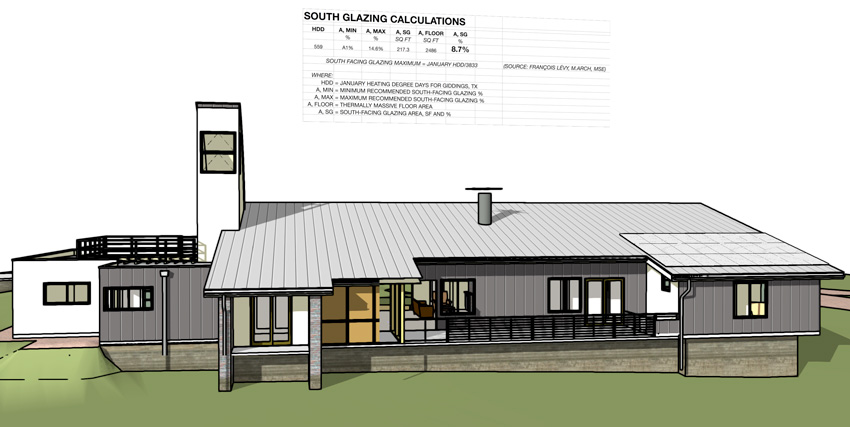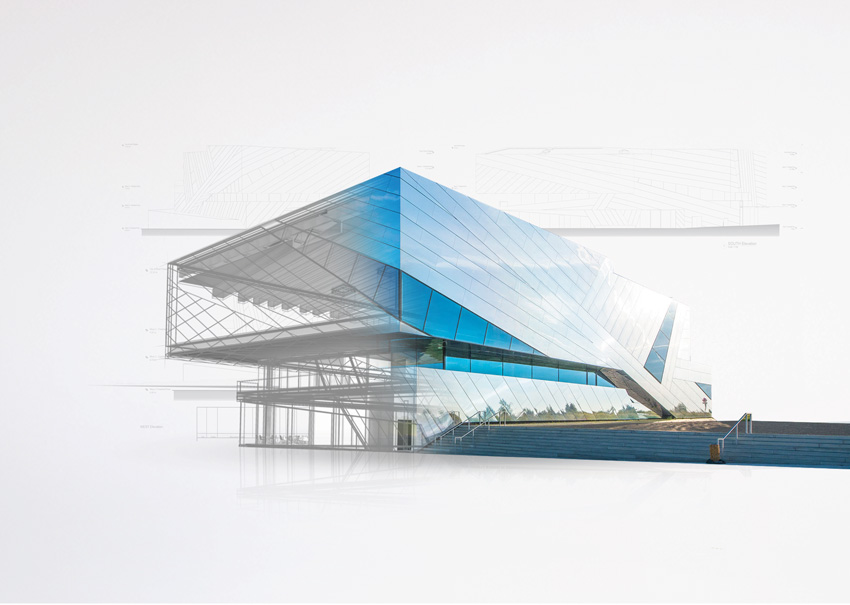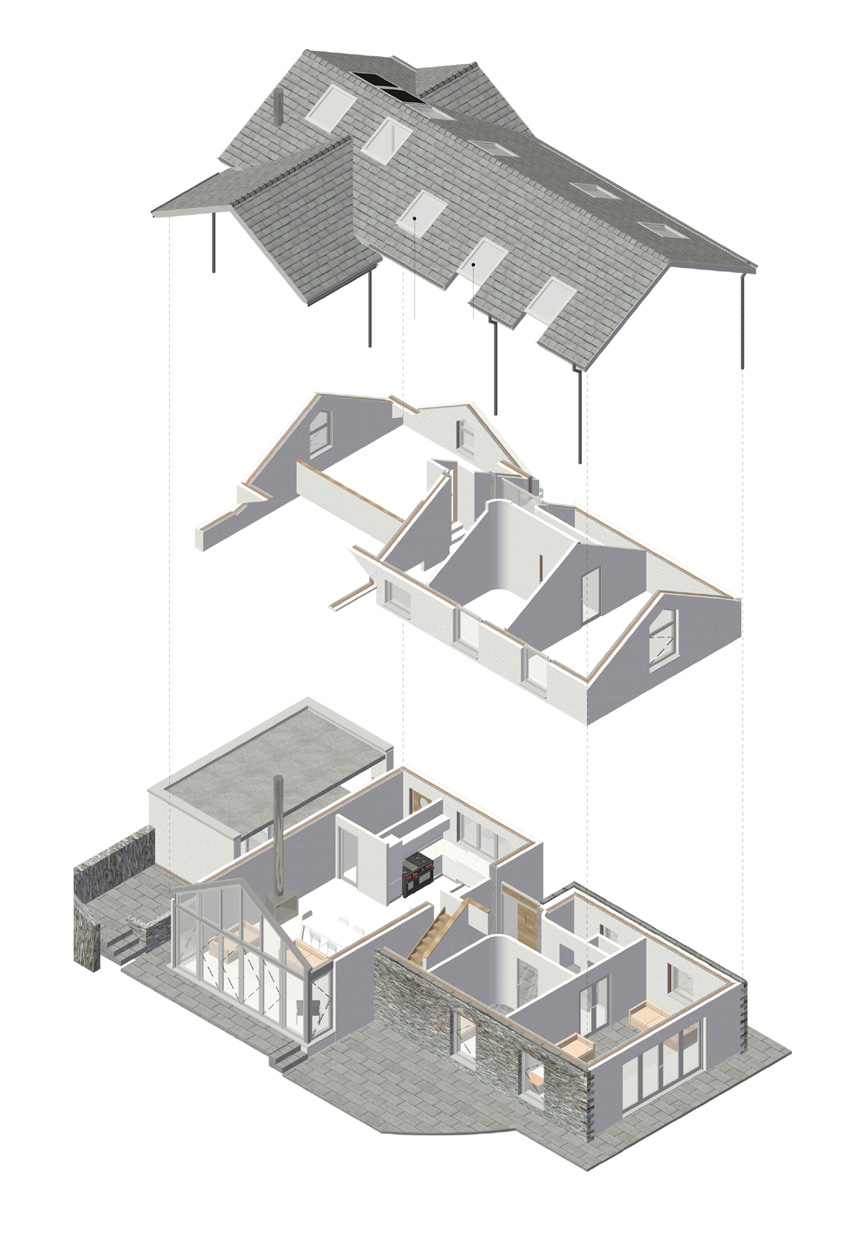Building Information Modeling (BIM) as an Investment
BIM as a Design Visualization and Rendering Tool
As noted in the AIA Firm Survey, design visualization is the most common thing that BIM is used for. This makes sense since it is based on creating a full three-dimensional model with as much, or as little, detail as may be desired. This helps throughout the design process in several ways. First, it allows different iterations of a building design to be readily created, compared, assessed, and analyzed from the perspective of different design team members, the building owner, or construction team members. This visualization can start with simple mass images in the conceptual design phase, with additional details added as needed to make comparisons between design concepts or to move on to design development. Second, the 3-D model can be the basis to check on the fundamental ways that the building interacts with its surroundings. This can include sunlight patterns on or in the buildings at different times of day or times of the year. It can also be the basis to perform energy use calculations and comparisons to make informed design decisions, including making adjustments and corrections for a better-performing building. Those adjustments could include changes in the size and shape of windows, colors of materials, building form, and other design conditions, which can be quickly visualized and assessed.

Image courtesy of François Lévy
BIM sun studies combined with real-time comparison of south-facing glass and internal thermal mass can inform the designer’s decision making early in the design process.
Rob Glisson, AIA, has some direct experience with the 3-D visualization aspect of BIM. He is the co-founder and principal of ROJO Architecture, a nine-person firm in Tampa. “Our first use of BIM was for visualization,” says Glisson. “We discovered that the better our models expressed our design intent, the easier it was to get owners to buy into our designs. This had a domino effect; owners were a little more willing to spend money because they really wanted what they saw in our visualizations and were also willing to hire qualified contractors to make sure they got the look they wanted—and contractors better understood our design through our visualizations.”
How did they get started with BIM? Glisson points out that “We never had an ‘adoption’ moment—we just eased into it. We initially started doing 3-D drawings mostly to show perspective views of our projects to clients, and continually added more information over time. When we finally went to a seminar about this new thing called BIM, we realized it was just the same thing we’d been doing for years.”
As a mid-sized firm, Glisson and his firm co-founder John Saldana recognized that the desire to learn in a BIM environment not only helps designers grow, but it also helps new employees excel within the organization. “The learning curve was easy—we just understood the basics and then kept learning the new tools as the software grew,” Glisson says. “As new people came onboard, they were able to easily learn the software and then quickly figure out that doing the work in BIM allowed them to have the opportunity to work on better projects and sell their designs to the team. The software just worked. We didn’t need special supercomputers or special training. Our interest in the concepts of BIM and where it would take us was enough to keep us moving.”

Image inspired by Holzer Kobler Architekturen
BIM models create the basis not only for visualization but also for the necessary contract documentation while offering more workflow efficiency and reduced errors.
BIM as a Construction Document Production Tool
Marketing and visualization are clearly important to the success of any design firm or facility-based organization, but the ultimate deliverable is the information needed to construct a building. While some circumstances allow for this to happen directly from a 3-D model, it is still more common to need 2-D drawings generated for permits and basic construction activities. A key point here is that the same BIM software can be used during design for 3-D modeling as well as for extracting 2-D construction documents. In fact, doing so is quite preferable. The model is the basis for all of the information related to the building, ultimately in considerable detail. Therefore, selecting the relevant information from the model to generate a particular drawing (i.e. floor plan, reflected ceiling plan, building section, etc.) is the most accurate, coordinated way to do so.
Generating construction documents across different disciplines is also a place where BIM provides great benefits. In many cases, the same software can be used by different disciplines to work on the same model, with some programs allowing this process to happen simultaneously. What this means is everyone on the design team is working from the latest, most up-to-date version of the model all the time. It also allows for quick and easy identification of problem areas or space conflicts that need to be resolved. All of these aspects save time in the design process, reduce the likelihood of needing to make corrections or revisions, and ultimately allow the whole team to work more efficiently and profitably.
One of the primary tools of BIM is the use of data-based objects, which are not just lines but complete, virtual building components that are created in the model with specific and defined characteristics and attributes. All of these objects can be customized or standardized to meet project requirements, while the embedded data allows for seamless coordination with different parts of the construction documents. For example, doors and windows that are created as data-based objects can be quickly and readily linked to create detailed door and window schedules. That same information can be captured and used in the creation of written specifications through software applications. The structural coordination of the openings for the doors and windows can also be developed in the model and then finalized in the details of the structural system. All of that information and data can then be the basis for final quantity take-offs as a basis for cost estimating.

Image courtesy of Jonathan Reeves
During the preparation of construction drawings, BIM is a powerful tool that can use defined “objects” linked to specification data to verify the assembly of components and their interactions.
There are other ways that BIM enhances construction documents. Creating a 3-D model not only of the building but also of the site allows for accurate and informed site design and coordination with building construction. This can allow everyone involved to see the relationship of site elements with the building, produce more accurate cut and fill calculations, and ultimately make the site-work portion more efficient and cost-effective. For other aspects of construction, different levels of information can be included to the level of shop drawing or fabrication detail if needed. That means everything can be done in a “single model environment” avoiding the need to review shop drawings during the construction administration phase of a project.
Rob Glisson of ROJO Architecture sums up the construction document process this way: “Working in BIM is really the only responsible thing to do for our clients, whether they understand that or not. BIM has forced us to become better architects, and it’s forced us to understand construction better. We no longer draw ‘schematically’—our BIM models are extremely accurate and approaching shop-level drawings.”









